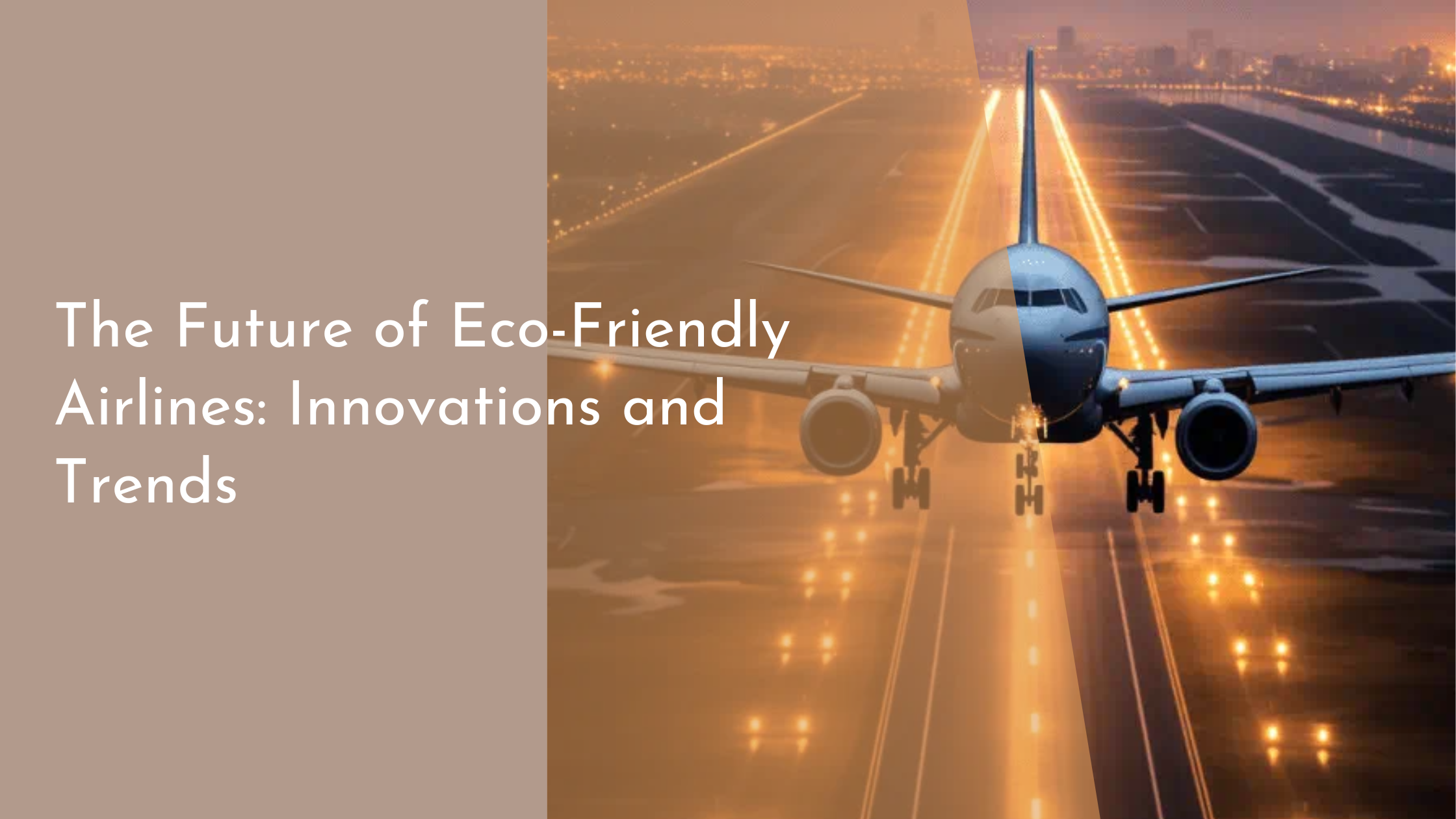The Future of Eco-Friendly Airlines: Innovations and Trends
The aviation industry, often scrutinized for its environmental impact, is soaring towards a greener future. With the constant advancement of technology and increasing environmental awareness, airlines are pioneering numerous eco-friendly innovations. This article explores the latest trends shaping the future of eco-friendly airlines, focusing on sustainable fuel alternatives, cutting-edge aircraft designs, eco-friendly in-flight practices, and collaborative efforts within the industry.
Sustainable Fuel Alternatives Taking Flight
One of the most promising innovations in the push for eco-friendly aviation is the development of sustainable aviation fuels (SAFs). These alternative fuels, derived from renewable resources like algae, waste oils, and even municipal waste, offer a potent solution to reduce the carbon footprint of airlines. Unlike traditional fossil fuels, SAFs can diminish greenhouse gas emissions by up to 80% over their lifecycle. As airlines invest in and adopt these sustainable fuels, we are witnessing a significant shift towards cleaner skies. Companies like Neste and World Energy are leading the charge, partnering with airlines to provide large-scale SAF solutions, showcasing potential for a greener future.
Moreover, initiatives such as the International Air Transport Association’s (IATA) commitment to net-zero carbon emissions by 2050 are driving the adoption of SAFs. Several airlines are incorporating SAF blends into their operations, demonstrating the real-world applicability of these fuels. Government incentives and increased consumer demand for eco-friendly travel are further accelerating this transition. As research and production capacities expand, we can expect SAFs to play a central role in the sustainable transformation of the aviation sector.
Cutting-Edge Aircraft Designs and Efficiency
The quest for more efficient aircraft has led to remarkable advancements in aerodynamics and materials. Aircraft manufacturers like Airbus and Boeing are developing new aircraft designs that maximize fuel efficiency and minimize emissions. For instance, Airbus’s “Wing of Tomorrow” program aims to create wings that are 30% more efficient than current models, utilizing lightweight composite materials and advanced aerodynamic shapes. Such innovations not only cut fuel consumption but also enhance the overall performance of aircraft, paving the way for a sustainable future.
In addition to reimagining aircraft architecture, electric and hybrid propulsion systems are gaining traction. These technologies promise significant reductions in emissions and noise pollution, making them an attractive option for eco-conscious airlines. Electric planes, though currently limited to short-haul flights, represent a major leap forward in green aviation technology. As battery technology improves, we can expect to see electric propulsion systems integrated into larger aircraft designs, revolutionizing the way we think about air travel.
Innovations in In-Flight Eco-Friendly Practices
Eco-friendly advancements are not limited to the tarmac; they extend into the cabin as well. Airlines are adopting numerous in-flight practices to reduce environmental impact, such as eliminating single-use plastics and utilizing biodegradable materials. In-flight meals are being reimagined with a focus on sustainability, featuring locally-sourced ingredients and packaging that minimizes waste. These changes not only enhance the passenger experience but also align with broader environmental goals.
Furthermore, advanced waste management systems are being implemented to better handle in-flight waste. Airlines are investing in technology that separates, recycles, and processes waste efficiently, reducing the overall environmental footprint of each flight. Additionally, initiatives like digital boarding passes and inflight magazines are minimizing paper use, contributing to a more sustainable in-flight environment. These collective efforts are part of a larger trend towards making air travel more responsible and sustainable.
Collaborative Efforts Shaping Green Aviation Future
Collaboration across the aviation industry is crucial in achieving sustainable goals. Airlines, manufacturers, governments, and environmental organizations are joining forces to create a cohesive strategy for a greener aviation future. Initiatives like the Clean Sky Joint Undertaking, a public-private partnership in Europe, focus on developing technologies that enhance aircraft efficiency and reduce emissions. Such collaborations are vital for pooling resources and expertise, driving the industry towards its environmental objectives.
International partnerships are also playing a pivotal role in shaping green aviation. Agreements such as the Carbon Offsetting and Reduction Scheme for International Aviation (CORSIA) exemplify global efforts to mitigate aviation’s carbon footprint. By setting emission targets and encouraging investment in sustainable technologies, these collaborations are laying the groundwork for long-term improvements in air travel sustainability. As the industry continues to work together, the vision of an eco-friendly future becomes increasingly attainable.
The future of aviation is undeniably green, with groundbreaking innovations and collaborative efforts reshaping the industry. From sustainable fuel alternatives to eco-friendly in-flight practices, every aspect of air travel is being reconsidered for its environmental impact. As airlines continue to invest in and embrace these changes, the dream of sustainable air travel is becoming a reality. The harmonious blend of technology, innovation, and cooperation promises a future where aviation and environmental stewardship go hand in hand, leading us to more sustainable skies.

